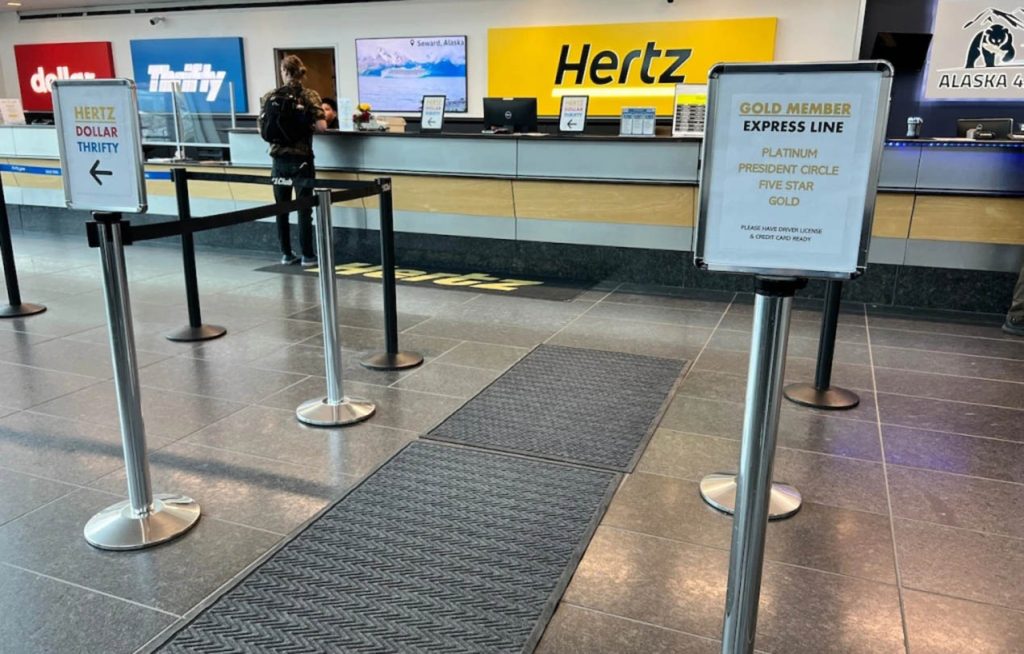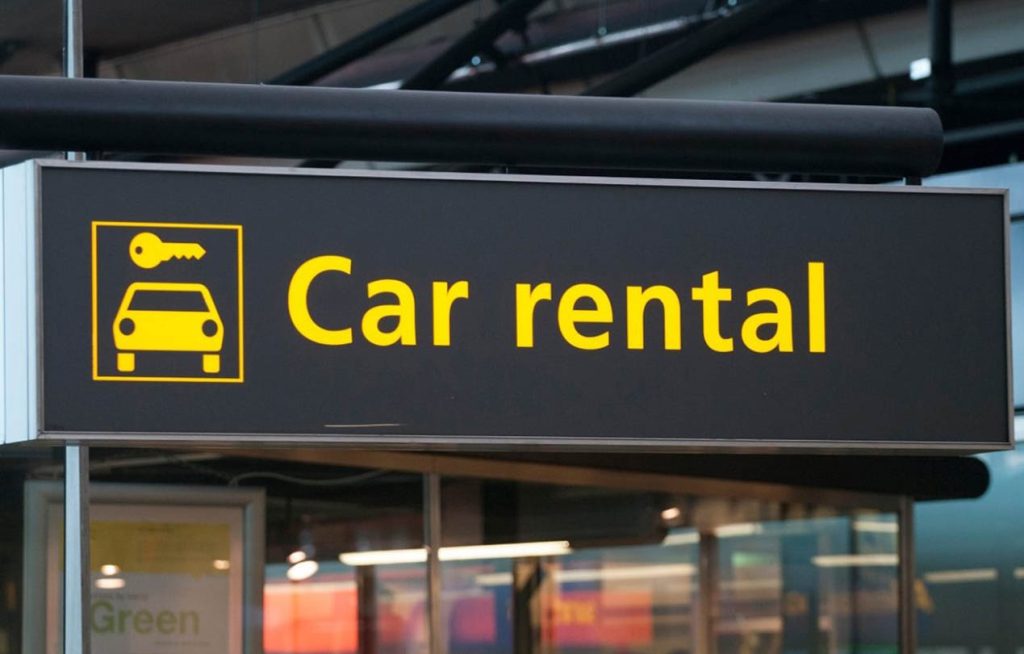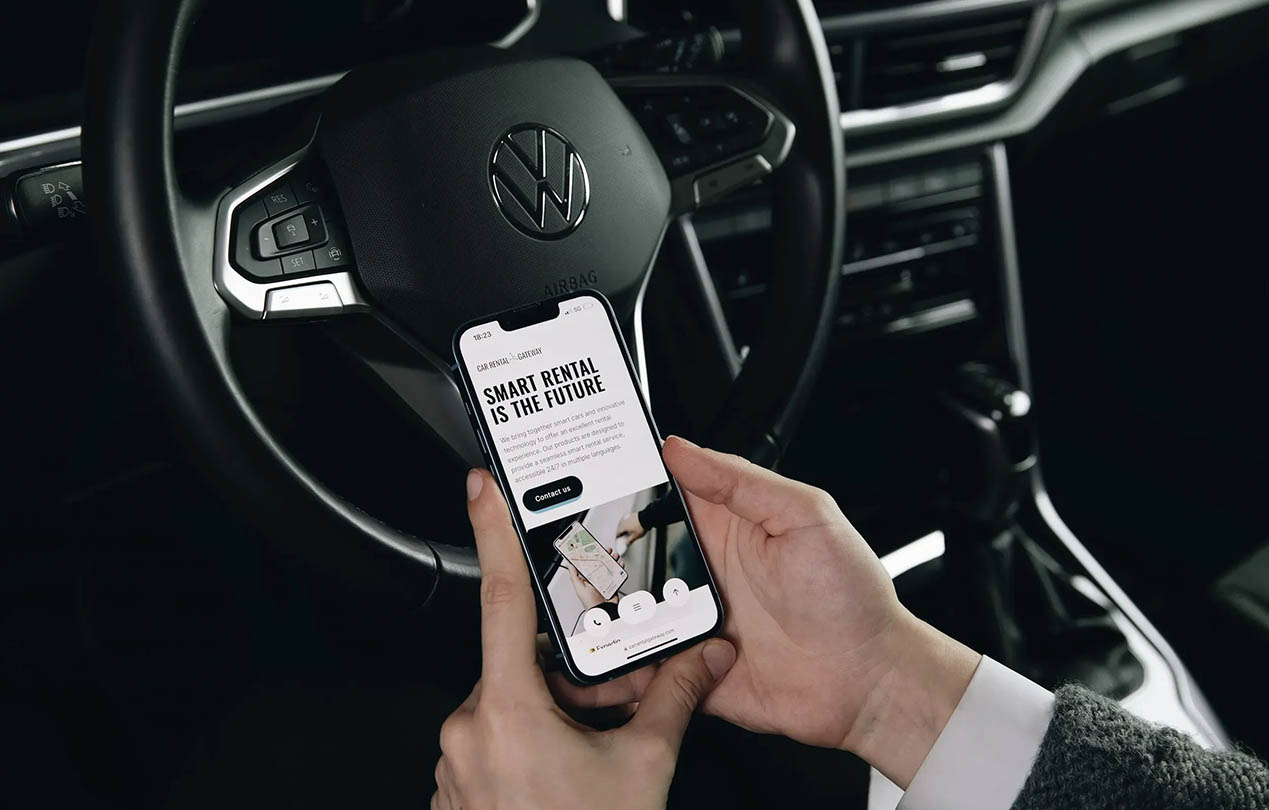When traveling in the United States, renting a car is one of the most convenient and flexible transportation options. Whether you want to explore nearby attractions in a city or embark on a cross-country road trip, renting a car provides you with incredible freedom. I will provide a comprehensive guide on renting a car in the U.S., covering everything from where to rent, insurance, traffic rules, fuel stations, and accident handling. Let’s dive into how to rent a car and embark on a smooth driving experience in America!
1. Where to Rent a Car?
In the U.S., car rental options are abundant, and you can find rental locations in major airports, city centers, and popular tourist areas. Well-known rental brands include Hertz, Enterprise, Avis, Budget, Alamo, and more, which are available in almost every major city and tourist destination in the U.S.
Ways to Rent a Car:
- Airport Rentals: For international travelers, the most convenient rental locations are at international airports. Most major airports in U.S. cities have rental service counters, and rental companies usually offer shuttle buses to take you to the rental pickup locations. If you’re flying directly into the U.S., it’s easy to rent a car right after you arrive at the airport.
- City Rentals: If you prefer not to rent a car at the airport, you can choose to rent a car from locations in the city center. In most cities, you’ll find rental offices, and prices may be lower compared to airport rentals.
- Online Reservations: Almost all rental companies offer online booking services. You can compare prices and book your vehicle in advance through rental platforms or company websites to save time and ensure the availability of your preferred car model.
Factors to Consider When Choosing a Rental Company:
- Price Comparison: Different rental companies may offer varying prices for the same car model. It’s a good idea to use comparison websites to get the best deal.
- Customer Reviews: Rental companies often have user ratings. Check reviews to find companies with high customer satisfaction.
- Pickup and Drop-off Locations: Ensure the rental pickup and drop-off locations are convenient for your travel plans. Consider the proximity to airports or city centers.
2. Should You Buy Insurance?
One of the most common questions when renting a car is whether or not to buy insurance. My advice? It’s highly recommended to purchase rental car insurance.
U.S. rental companies generally offer three types of main insurance options:
- Collision Damage Waiver (CDW)/Loss Damage Waiver (LDW): This insurance covers damages to the vehicle in case of an accident or damage. By purchasing this insurance, you won’t be responsible for repair costs. Rental companies will often upsell this insurance, but keep in mind that some credit cards also provide rental car insurance (check your credit card benefits). Therefore, you might want to review the terms of your credit card’s coverage before renting.
- Supplemental Liability Insurance (SLI): This insurance protects you in case you’re held responsible for third-party vehicle damage. It covers additional liability expenses, which can be very important in the event of an accident.
- Personal Accident Insurance (PAI): This insurance provides medical coverage and compensation for injuries in the event of an accident.
It’s important to note that some U.S. states may require you to purchase basic insurance, so make sure to ask about the coverage at the time of booking. It’s better to have the peace of mind of being fully covered during your trip.
3. Traffic Rules You Need to Know
Understanding the traffic rules and driving customs in the U.S. is crucial before hitting the road. Here are some important traffic rules to keep in mind:

- Driving Side: In the U.S., vehicles drive on the right-hand side of the road, which is similar to many countries around the world. While it may take some adjustment for those used to driving on the left, most international travelers adapt quickly.
- Traffic Signs: U.S. traffic signs are usually straightforward, but it’s still important to watch for specific signs. For example, you’ll encounter STOP signs, yield signs, speed limit signs, and more.
- Speed Limits: Speed limits vary by state. Typically, the speed limit in urban areas is 25–35 mph (40–55 km/h), while on highways, it ranges from 55–75 mph (90–120 km/h). However, be aware that speed limits may decrease in construction zones or special areas, so pay attention to signs.
- Traffic Lights: In most states, it’s legal to turn right on red unless specifically prohibited by a sign. However, there may be exceptions, so always check the signs before making a right turn on red.
- Four-Way Stops: A common intersection in the U.S. is the four-way stop, where all vehicles must come to a complete stop and proceed in the order they arrived at the intersection.
- Drunk Driving: U.S. states have very strict regulations regarding drunk driving. The legal limit for blood alcohol concentration is 0.08%. If you are caught driving under the influence, the penalties can be severe. Therefore, it’s crucial to avoid drinking and driving during your trip.
- Cell Phones: In many states, using a hand-held cell phone while driving is prohibited. You must use a Bluetooth headset or hands-free device to make calls.
4. Interstate Highways and Toll Roads
The U.S. has an extensive network of Interstate Highways that connect major cities and states. Driving on these highways is fast, efficient, and convenient for long-distance travel.
However, there are also toll roads (收费公路) across the U.S., especially in the eastern and central parts of the country. On these roads, you will be required to pay a fee to access the highway. Toll collection methods vary. Some roads require cash payment, while others use electronic toll systems like EZ-Pass, which automatically charges your registered credit card.
5. How to Fuel Your Car at Gas Stations
Filling up your car at U.S. gas stations is easy, but there are a few things you need to know, especially if it’s your first time:
- Types of Fuel: Most U.S. gas stations offer three common types of fuel: Regular (87 octane), Midgrade (89 octane), and Premium (91 or 93 octane). Regular fuel is suitable for most cars, while premium fuel is typically used for high-performance vehicles.
- Payment Methods: Most gas stations accept credit and debit cards. Some stations also accept cash, but credit cards are the most common method.
- How to Fuel: Simply insert the fuel nozzle into the gas tank and select the type of fuel you need. Once the tank is full, the pump will automatically stop.
- Self-Service: The majority of gas stations in the U.S. are self-service, so you will need to pump the gas yourself. Instructions are clearly posted on the pumps, so it’s easy to follow along.
6. How to Handle Accidents

Even the most cautious drivers can experience accidents. It’s important to know how to handle accidents when you’re driving in the U.S. Here’s a guide:
- Ensure Safety: First and foremost, make sure that everyone involved in the accident is safe. Move your vehicle to a safe spot and turn on your hazard lights.
- Call Emergency Services: Dial 911 immediately if there are injuries or significant damage. Police will come to the scene and file a report.
- Exchange Information: No matter who is at fault, exchange names, addresses, contact information, driver’s license numbers, and vehicle details. If there are any witnesses, get their contact details as well.
- Insurance Claims: Contact your rental company and insurance provider to report the accident. Follow their instructions for filing a claim and any necessary documentation.
By following these simple steps, you can easily rent a car in the U.S. and have a smooth self-driving experience. From choosing a rental company, purchasing insurance, understanding traffic rules, and fueling your car, to dealing with accidents, knowing these details will ensure a hassle-free journey.
Driving in the U.S. is a fun and rewarding experience. The freedom to explore is unmatched, and following these tips will ensure that you stay safe and comply with local laws during your trip. I hope this guide helps you in your American adventure!
Recommended Rental Brands:
- Enterprise Rent-A-Car: Known for high-quality service, reasonable prices, and nationwide availability.
- Hertz: A global leader in car rentals, offering a wide selection of vehicles and excellent customer service.
I hope this guide makes your trip to the U.S. even more enjoyable!

